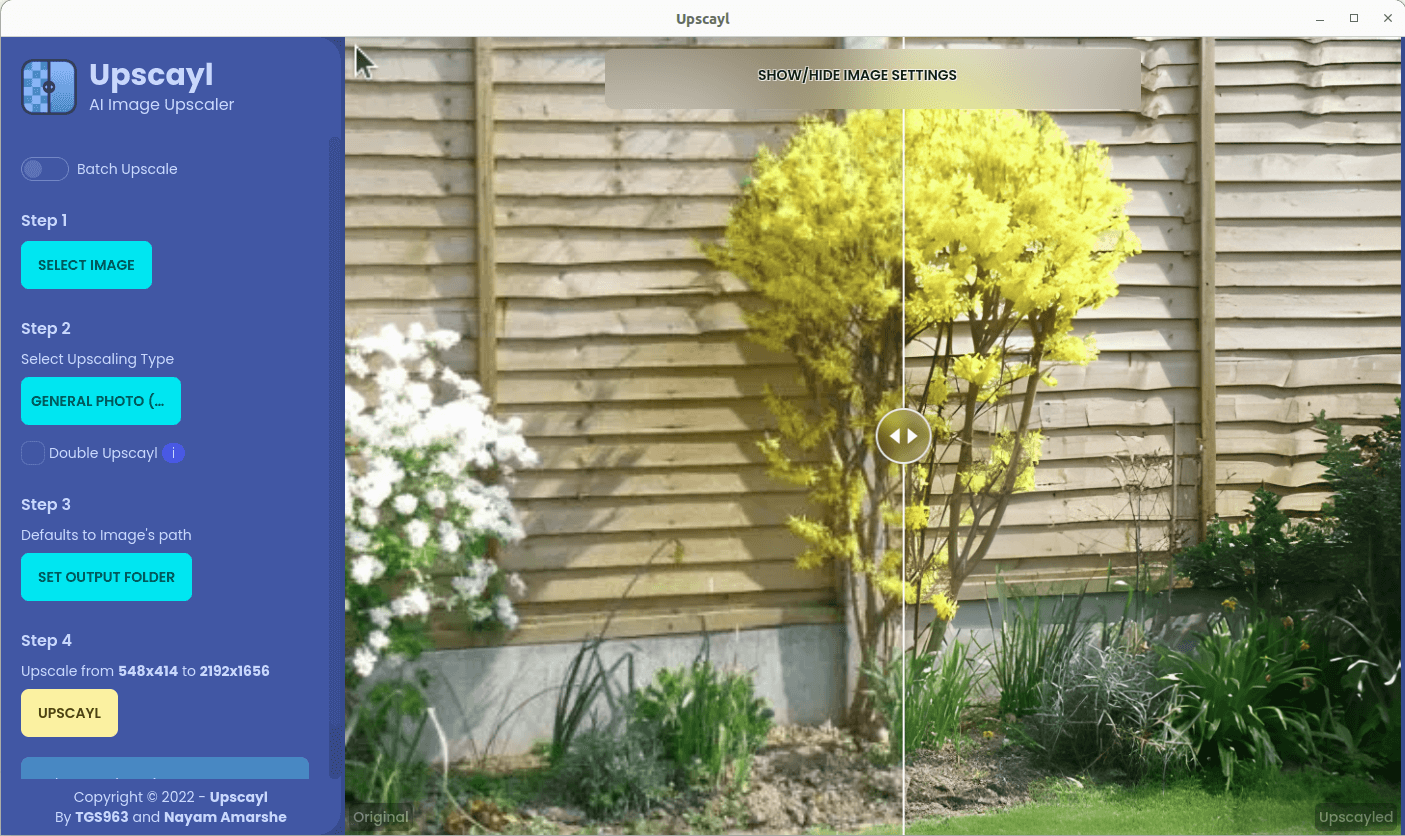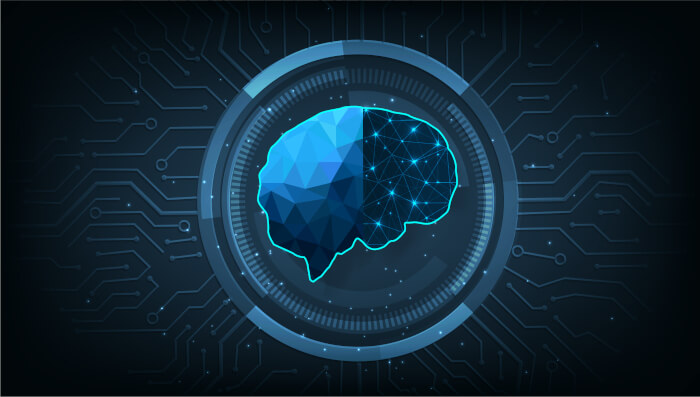Last Updated on April 28, 2023
In Operation
Here’s an image of Upscayl in action. On the left, you select an image, select the type of upscaling, set the output folder. Then click the yellow button to let the software refine the photo.

There’s a slider which lets you conveniently compare the original image with its upscaled counterpart.
The upscaling types are:
- General Photo: Real-ESRGAN
- General Photo: Remacri – a creation of BSRGAN with more details and less smoothing, made by interpolating IRL models such as Siax, Superscale, Superscale Artisoft, Pixel Perfect,
- General Photo: Ultramix Balanced
- General Photo: Ultrasharp
- Digital Art
- Sharpen image
Upscayl doesn’t code the upscaling algorithm itself. It’s a frontend to pretrained models offered by REAL-ERSGAN.
The software also offers a useful batch upscale and double Upscayl, the latter further doubles the upscaling. You can save images in PNG, JPG, and WEBP formats.
Other features include:
- Manual GPU ID control for machines with Multi-GPUs; GPU-ID auto-save.
- Zoom options.
- Lots of themes if the colour scheme of the interface is important to you.
Summary
The main benefit conveyed by Upscayl is that the software offers a very simple and intuitive way to access a variety of pretrained models. If you want to upscale poor quality images using deep learning technology without needing to revert to the command-line, this GUI utility is perfect for you. Alternatively, if you’re happy installing software that requires more steps, we strongly recommend Invoke-AI, software that uses Real-ESRGAN to enlarge the image immediately after generation using a web user interface.
We’d love to see more pretrained models available. In particular, it would be awesome if the face recognition GFPGAN was added, together with the ability to chain that model with Real-ESRGAN. And an option to repair images with scratches would tick all the boxes.
As with other deep learning tools, you’ll need a good GPU to process images quickly.
Website: www.upscayl.org
Support: GitHub Code Repository
Developer: Nayam Amarshe and TGS963
License: GNU Affero General Public License v3.0
Upscayl is written in TypeScript and JavaScript. Learn TypeScript with our recommended free books and free tutorials. Learn JavaScript with our recommended free books and free tutorials.
![]() For other useful open source apps that use machine learning/deep learning, we’ve compiled this roundup.
For other useful open source apps that use machine learning/deep learning, we’ve compiled this roundup.
Pages in this article:
Page 1 – Introduction and Installation
Page 2 – In Operation and Summary

First off I am not a programmer. But a rather hard-core linux user. A simple comment-could this software method be added to a full tool graphic pgm such as Gimp.This would expand the graphic pgm to a higher level.
I was thinking along the same lines. Upscayl is just a simple graphical frontend. But the underlying software it uses to restore images is Real-ESRGAN, that’s open source software written in Python.
There is nothing to stop the gimp developers or any other developers adding a Python plugin for Real-ESRGAN.
You probably should take a look at GIMP-ML, which is AI for GNU Image Manipulation Program. Its website says “Applications from deep learning such as monocular depth estimation, semantic segmentation, mask generative adversarial networks, image super-resolution, de-noising and coloring have been incorporated with GIMP through Python-based plugins.”
We’ve never really tested GIMP-ML, but we’ll probably write up our investigation in due course. There are a lot of AI models included but from a very brief look, it does not appear Real-ESRGAN is present. There is SRResNet.
—-
After spending a few hours of trying to install GIMP-ML, I stopped trying. Looks like development has stalled for the past couple of years in any event.
Thanks for the positive thoughts. It could happen in enough people post comment’s and want’s. That’s how linux works.
Yes, definitely a need for more ML software to be included in the mainstream desktop Linux apps like GIMP.